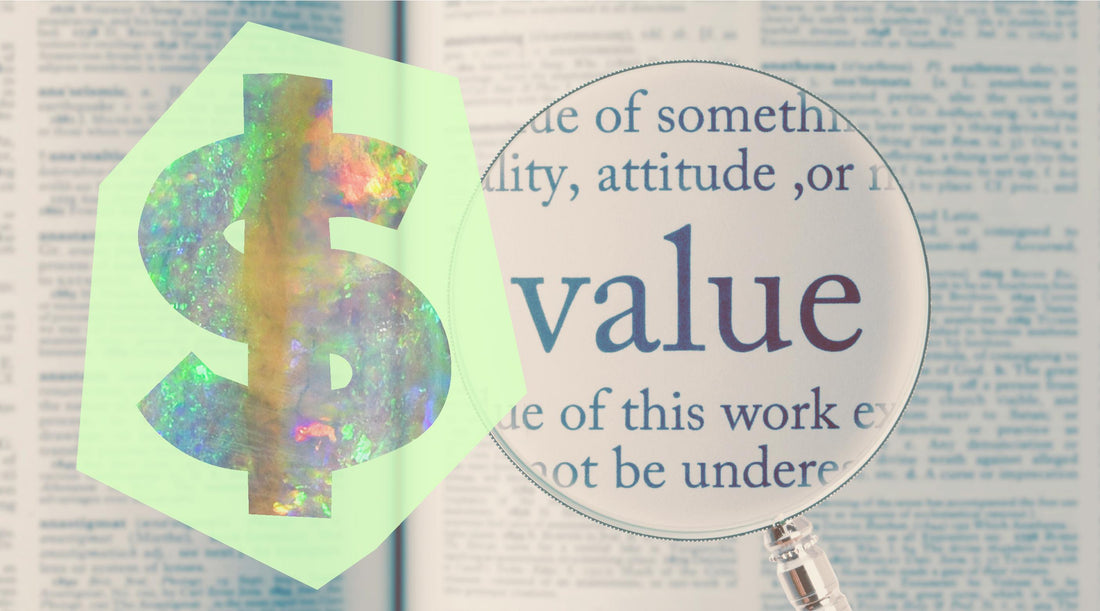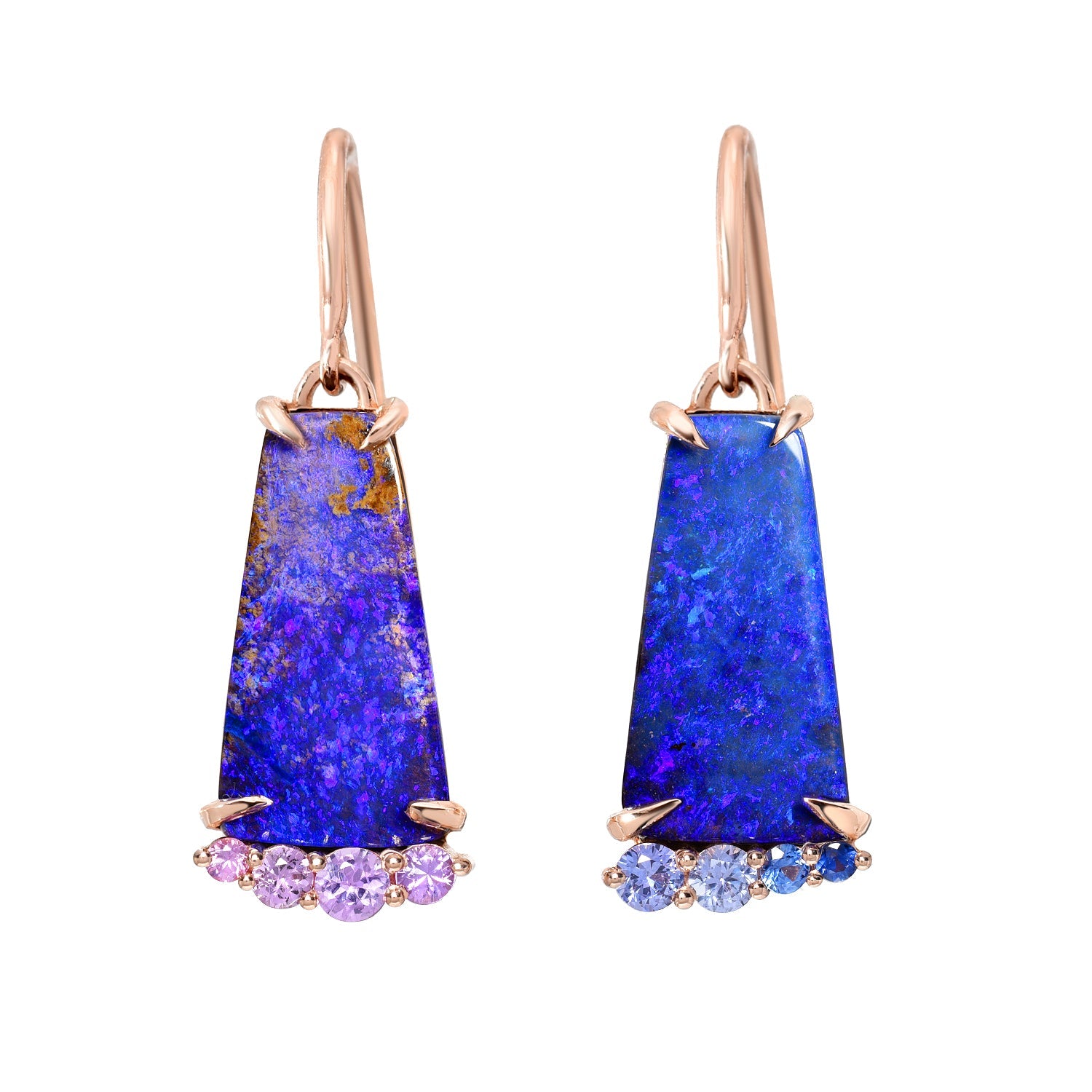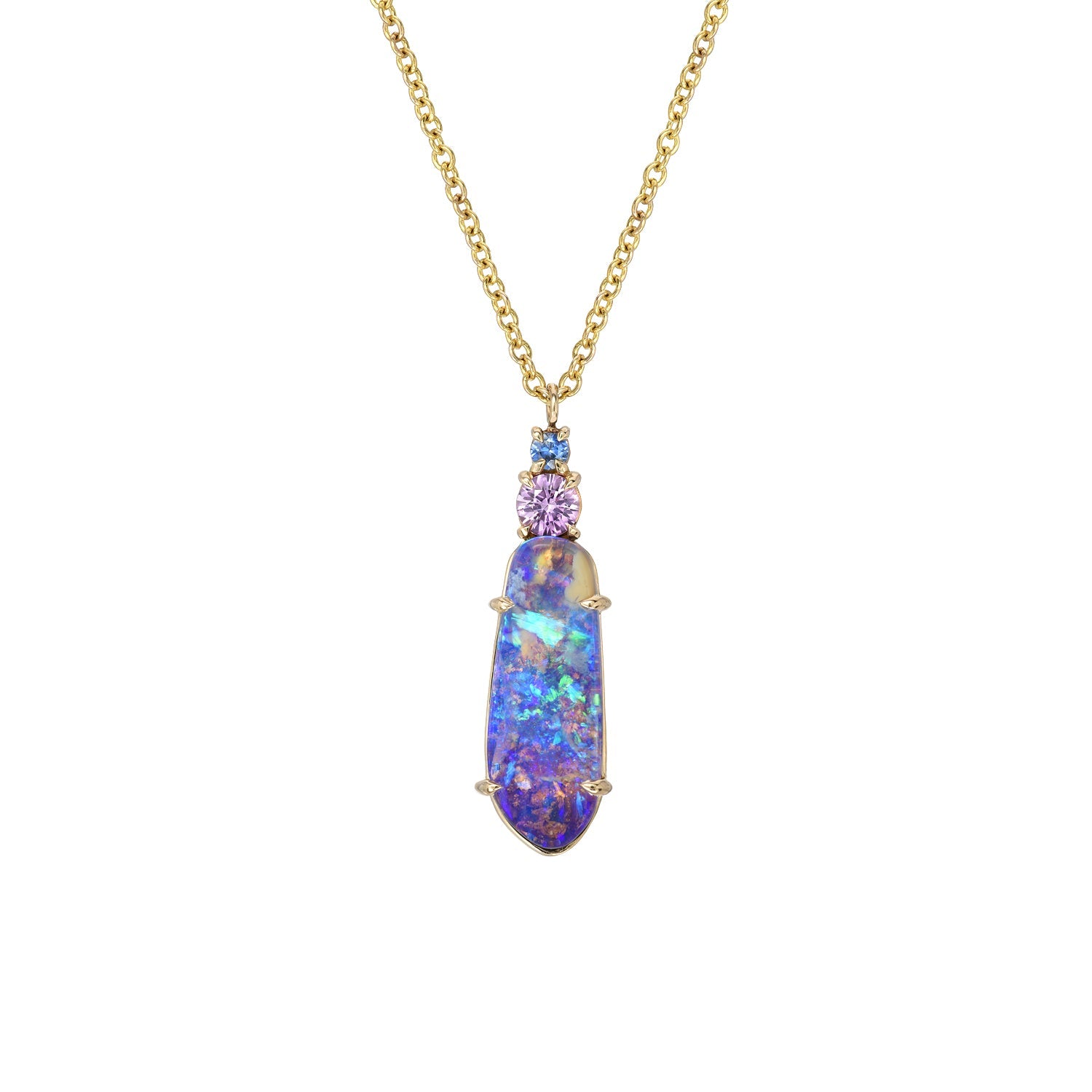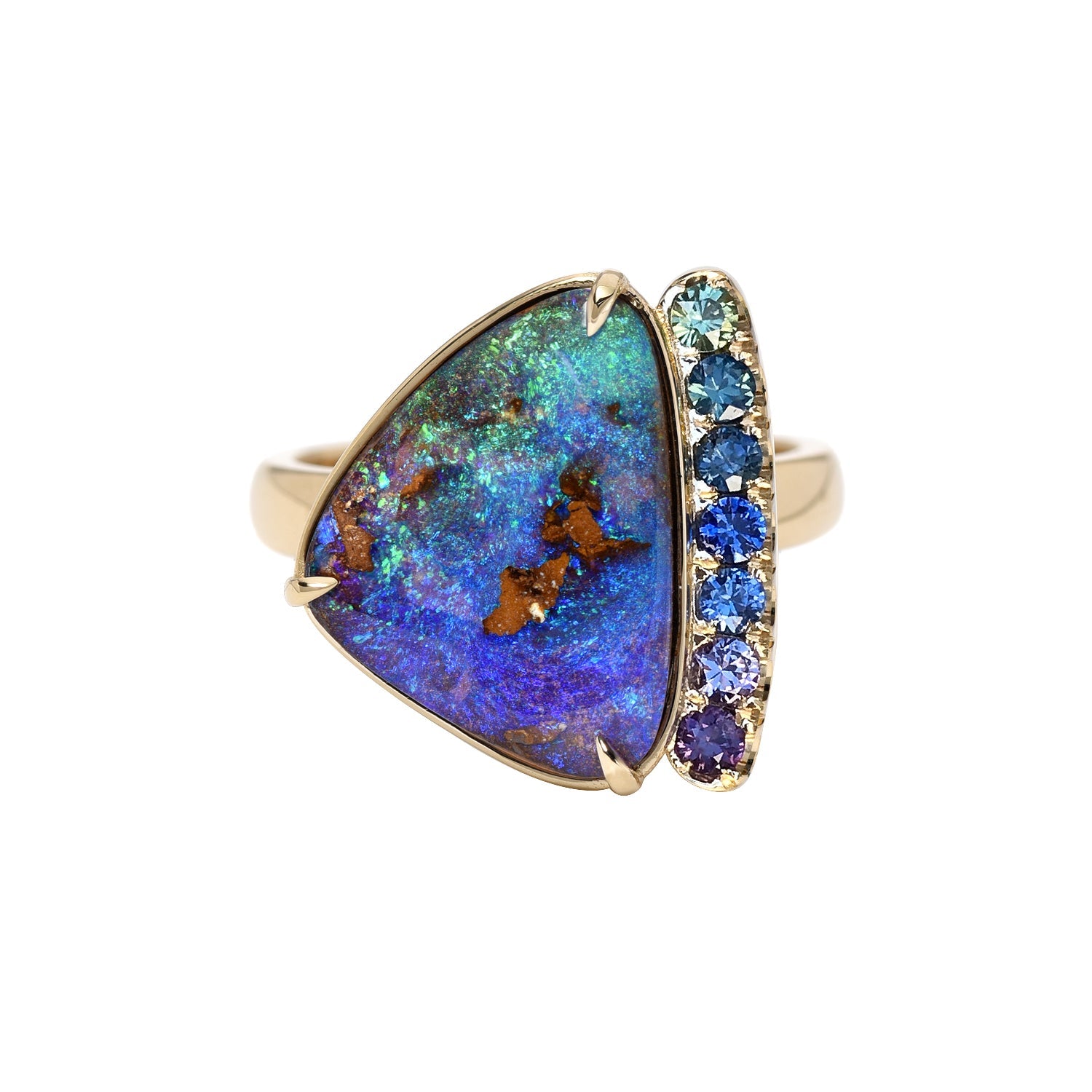Opal, due to its unique characteristics, is by far one of the hardest gemstones to value. It’s full of subjective variables and a range of properties that have to be classified. Amongst them, characteristics like provenance, color, pattern, brightness, size, etc. In comparison, diamonds, rubies, and sapphires, have a relatively simple classification system — Opal doesn’t. In this article, we’re going to give a step-by-step walk-through on factors that contribute to the price of Opal. Those critical points that help appraisers determine the final value of Opal.
Factors that determine the value of Opal — How to appraise Opal
Color
The hue of the gemstone, its color, is the first thing an experienced appraiser will note. Red is by far one of the most sought out colors, due to how rare it is. Red is followed by orange, green, blue, and purple. Nonetheless, it's important to point out that Opal is never a single color but a mix. An appraiser's job is to determine which is the dominant color, followed by secondary and tertiary hues.
Direction of the Color
Opals are gemstones that change in appearance. Their beauty is largely determined by the angle at which the gemstone is viewed. The direction of the color affects the overall price of the Opal. The more elastic and versatile the Opal is — the more directions the spark and brilliance flow to — the more valuable it will be. This quality is also known as “directionality.”
For example, Opals with a fierce brilliance from all directions make great options for ring stones. Meanwhile, Opals that face one direction are more often reserved for pendants.
A jeweler experienced with Opal will always set the Opal in such a way that it displays as much fire as possible.
Pattern
Opals have a natural pattern to them — the more bizarre, rare, or unique the pattern the more valuable it will be. For example, the Harlequin Pattern is by far the rarest and most sought-after configuration when it comes to Opal pattern. It is a mosaic of contracting shapes, often angular or specifically diamond shaped, that create a repeating pattern. It is a unique pattern mostly found in Opals from Australia, particularly Black Opals in the Lighting Ridge area. Most miners, if they are lucky, only find one true Harlequin Opal in their lifetimes.
Other patterns include Mackerel, Broad Flash, Floral, Pinfire, Block, Chinese Writing , and Ethiopian Opal’s Honeycomb pattern.
Body Tone
Body tone is different from color. It is one of the most important factors when it comes to classifying and ultimately placing a value on particular gemstone. Body tone is the underlying - background - color of the Opal. To assess the body tone of a stone, you want to look at the front of the Opal, but ignore the bright flashes of color upon it - you are purely looking at the backdrop from which the bright colors burst forth.
The current body tone guide was created and endorsed by the Opal Association of Australia. They are the leading authority because 95% of Opals mined in the world come from that continent. Opals are generally divided into 9 body tone sub-types — N1 to N9.
N1 is by far the most valuable, it's also the darkest. These are generally referred to as black opals (N1 to N4). Anything that falls in the middle of that body tone guide - N5 to N6 - is called semi-black or dark opal. Finally, at the end of the spectrum, N7 to N9, we find crystal opals and white opals.
Brightness
Another benchmark produced by the Opal Association of Australia is the brightness guide. Along with body tone, and color, it is important to highlight the gemstone's brightness rating — B1 is by far the most vivid while B7 is the dullest.
Appraisers classify an Opal’s brilliance in ranges that go from brilliant, bright, to subdued, or dull. The brighter the Opal, the more expensive it is.
Shape
The shape of an Opal can have a significant impact on its value. Traditionally, oval Opals have been more desirable than freeform shapes — except in organically inspired designs where the opposite holds true. The shape of an Opal can determine how flexible it is to design around and how easy it will be for a jeweler to set it and really make it shine. Oval opals can be more versatile when it comes to the direction of light, and their symmetry makes them a logical choice for a range of applications - particularly for Clients with a more classical preference. However, more unusual geometric shapes and freeform Opals have become increasingly popular as Opal demand continues to surge. Here at NIXIN Jewelry, we seek Opals unlike any others, whether oval or asymmetrical, and dream up designs inspired by the stones we find. The Waning Moon Necklace, is an example of such - it incorporates a Lightning Ridge Crystal Opal we sourced, in an irregular cut, and we allowed the stone to direct the design.

Waning Moon Diamond and Gold Opal Necklace
Origin
95% of Opals come from Australia, and they have achieved a worldwide reputation for having some of the most exquisite stones in existence. Australia’s mining practices, as well as its native geological formations, make these stones the most expensive Opals on the market. That’s not to say that Opals from Ethiopia, Mexico, and Brazil aren’t precious, just that Australia is the dominant market presence.

Image from Abc.net.au -- Opal miners in Australia
Natural Vs Treated
One of the main reasons why Australia has such a great reputation for its Opal and its prized gemstones is because of its mining practices. Over the years, other places, like Ethiopia have faced more controversy when it comes to their Opals. Why? They often treat them.
What does that mean, to treat an Opal? It means that Opal has been smoked or blanketed with chemicals (sometimes even sugar) to change its body tone so it's darker or to intensify its play of color. Normally, when this happens, the seller has to state that the Opal was treated — that isn’t always the case.
Inclusions
Opals sometimes form themselves around vegetation or sand or other organic matter which can cause patterns of ghost imprints within them. While this technically decreases the value of the Opal, to those who appreciate an organic aesthetic, these included Opals are often preferred. The inclusions add an element of interest and character to the stone and can contribute to the one of a kind nature of Opal art.
Faults
Different types of faults or flaws in an Opal can either detract from the value of a gemstone or render it worthless. What types of faults should you be most on the lookout for?
- External cracks (most significant if in a ring)
- Crazing (a network of small cracks across the stone)
- Windows (sections devoid of color)
- Potch lines or webbing (streaks across the surface of non-colorful Opal)
While the last two above may detract from the stone’s overall value, they don’t create a structural problem. So for those who lean into these visual nuances, and appreciate the unique pictures they paint within the stone, they don’t have to be Opal deterrents. It's simply important to understand the qualities of stone you are looking at.
Why do you need to know how Opals are valued
Ultimately, unless you’re planning to sell the Opal or Opal Jewelry you are purchasing, you don’t need to identify the exact value of an Opal stone - in fact, it can be near impossible. That said, it’s a good idea to understand the basics around what you are buying, and reach out to the seller with any questions you may have. What’s most important is that you love what you are getting; that it makes you feel special every time you put it on. For some, that may mean an oval shaped Harlequin Black Opal Ring; for others, that may mean a freeform Boulder Opal Picture Stone. Here at NIXIN Jewelry, we appreciate the full range of aesthetics Opal has to offer, from gem quality to imperfectly perfect - we find beauty in each unique stone. We invite you to explore our collection and come find your one of a kind.




